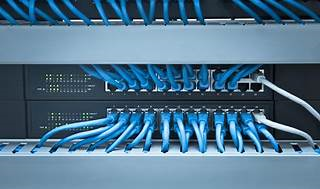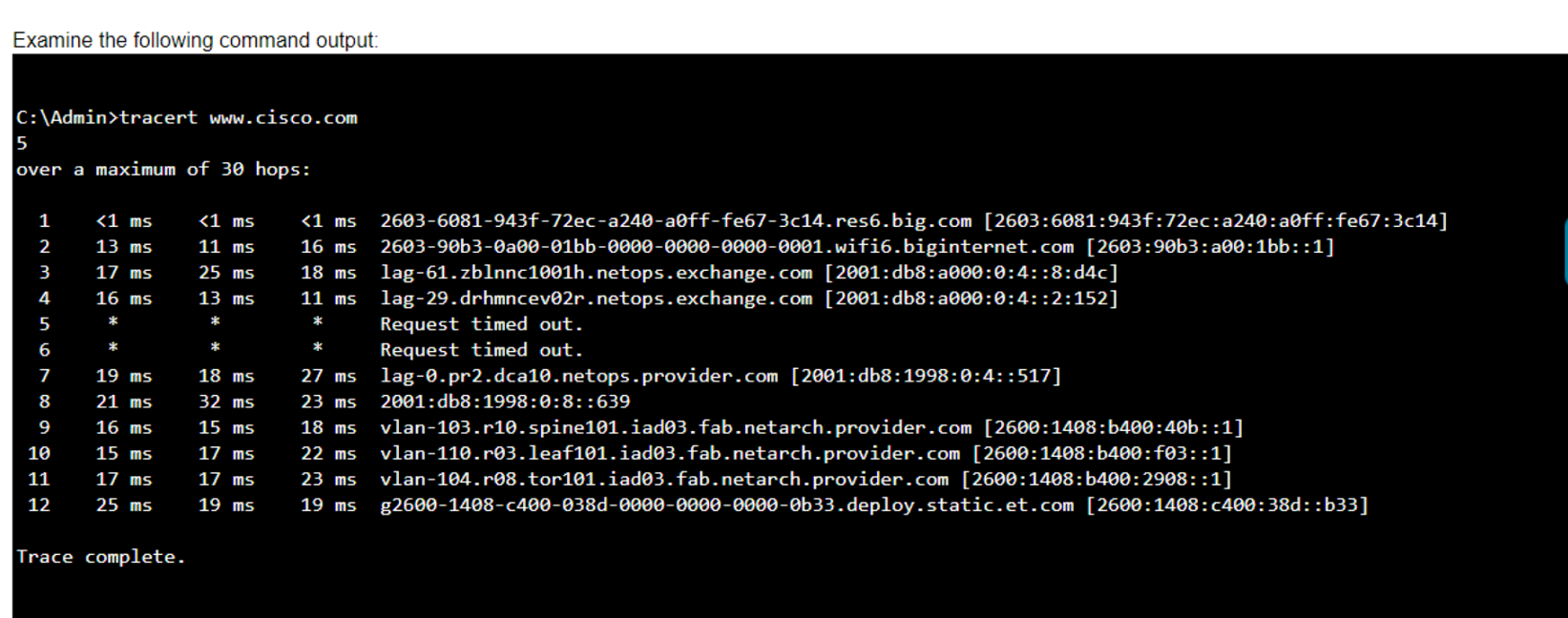Master Cisco CCST-Networking Exam with Reliable Practice Questions
Which command will display all the current operational settings configured on a Cisco router?
Correct : D

The show running-config command is used on a Cisco router to display the current operational settings that are actively configured in the router's RAM. This command outputs all the configurations that are currently being executed by the router, which includes interface configurations, routing protocols, access lists, and other settings. Unlike show startup-config, which shows the saved configuration that the router will use on the next reboot, show running-config reflects the live, current configuration in use.
show running-config: This command displays the current configuration running on the router. It includes all the operational settings and configurations applied to the router.
show protocols: This command shows the status of configured protocols on the router but not the entire configuration.
show startup-config: This command displays the configuration saved in NVRAM, which is used to initialize the router on startup, but not necessarily the current running configuration.
show version: This command provides information about the router's software version, hardware components, and uptime but does not display the running configuration.
Cisco IOS Commands: Cisco IOS Commands
Start a Discussions
Examine the following output:

Which two conclusions can you make from the output of the tracert command? (Choose 2.)
Note: You will receive partial credit for each correct answer.
Correct : A, C
* Statement A: 'The trace successfully reached the www.cisco.com server.' This is true as indicated by the 'Trace complete' message at the end, showing that the trace has reached its destination.
* Statement C: 'The IPv6 address associated with the www.cisco.com server is 2600:1408:c400:38d::b33.' This is true because the final hop in the trace, which is the destination, has this IPv6 address.
* Statement B: 'The trace failed after the fourth hop.' This is incorrect as the trace continues beyond the fourth hop, despite some intermediate timeouts.
* Statement D: 'The routers at hops 5 and 6 are offline.' This is not necessarily true. The routers might be configured to not respond to traceroute requests.
* Statement E: 'The device sending the trace has IPv6 address 2600:1408:c400:38d::b33.' This is incorrect; this address belongs to the destination server, not the sender.
* Understanding Traceroute: Traceroute Guide
Start a Discussions
Which two pieces of information should you include when you initially create a support ticket? (Choose 2.)
Correct : A, C
Statement A: 'A detailed description of the fault.' This is essential for support staff to understand the nature of the problem and begin troubleshooting effectively.
Statement C: 'A description of the conditions when the fault occurs.' This helps in reproducing the issue and identifying patterns that might indicate the cause of the fault.
Statement B: 'Details about the computers connected to the network.' While useful, this is not as immediately critical as understanding the fault itself and the conditions under which it occurs.
Statement D: 'The actions taken to resolve the fault.' This is important but typically follows the initial report.
Statement E: 'The description of the top-down fault-finding procedure.' This is more of a troubleshooting methodology than information typically included in an initial support ticket.
Best Practices for Submitting Support Tickets: Support Ticket Guidelines
Start a Discussions
Which address is included in the 192.168.200.0/24 network?
Correct : B
* 192.168.200.0/24 Network: This subnet includes all addresses from 192.168.200.0 to 192.168.200.255. The /24 indicates a subnet mask of 255.255.255.0, which allows for 256 addresses.
* 192.168.199.13: This address is in the 192.168.199.0/24 subnet, not the 192.168.200.0/24 subnet.
* 192.168.200.13: This address is within the 192.168.200.0/24 subnet.
* 192.168.201.13: This address is in the 192.168.201.0/24 subnet, not the 192.168.200.0/24 subnet.
* 192.168.1.13: This address is in the 192.168.1.0/24 subnet, not the 192.168.200.0/24 subnet.
* Subnetting Guide: Subnetting Basics
Start a Discussions
Which device protects the network by permitting or denying traffic based on IP address, port number, or application?
Correct : A
Firewall: A firewall is a network security device that monitors and controls incoming and outgoing network traffic based on predetermined security rules. It permits or denies traffic based on IP addresses, port numbers, or applications.
Access Point: This is a device that allows wireless devices to connect to a wired network using Wi-Fi. It does not perform traffic filtering based on IP, port, or application.
VPN Gateway: This device allows for secure connections between networks over the internet, but it is not primarily used for traffic filtering based on IP, port, or application.
Intrusion Detection System (IDS): This device monitors network traffic for suspicious activity and policy violations, but it does not actively permit or deny traffic.
Understanding Firewalls: Firewall Basics
Start a Discussions